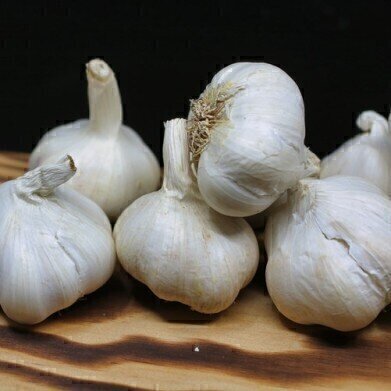GC-MS
Can Chromatography Maximise Garlic's Antioxidant Qualities?
Nov 05 2020
Garlic has grown and used for cooking and medicinal uses by many different cultures for centuries. Fresh garlic cloves, aged garlic and garlic supplements are used globally to make sure we get a hit of this pungent and strong-tasting allium. Garlic is a rich source of organosulfur compounds and it is these compounds that are predominantly responsible for its flavour and aroma.
Besides their contribution to flavouring many delicious food dishes, organosulfur compounds are also responsible for garlic’s medicinal and health benefits. There have been many studies that have validated garlic’s claims to be a superfood that not only tastes great but also keeps the doctor at bay. But how you assess the health benefits of garlic could affect the results you obtain. A recent paper published in the Vietnam National University Journal of Science: Medical and Pharmaceutical Sciences reports that how you extract garlic oil from garlic could play a part in the results that you see.
Garlic - Allium sativum, onion’s brother
Garlic is a species in the onion family of Allium. It was originally found in Central Asia but is now found globally and is used in foods and in traditional medicine by many cultures. Fresh and crushed garlic has the pungent odour associated with sulfur compounds. And it is these compounds that give garlic both its strong flavour and odour as well as its medicinal benefits.
There have been many studies that have investigated garlic’s antioxidant effects both in vivo and in vitro and these have concentrated on garlic’s organosulfur compounds such as S-allylcysteine and alliin. In these studies, several different antioxidant mechanisms have been reported which include scavenging reactive oxygen species (ROS), increasing enzymatic antioxidant levels, activating Nrf2 which is a transcription factor for antioxidant response, and it can inhibit prooxidant enzymes.
The extraction route plays a part
Before researchers can analyse the antioxidant properties of garlic oil extracts like S-allylcysteine and alliin, they must be extracted from garlic. In the paper The Effect of Different Extraction Procedures on Antioxidant Activity of Garlic (Allium sativum L.) Essential Oil the authors investigate three extraction methods – Soxhlet extraction, distillation and supercritical extraction and found the yields of essential garlic oil to be 0.441%, 0.124% and 0.465% respectively.
The extracts were analysed using gas chromatography-mass spectrometry. The use of GC-MS is discussed in the article, Analysis and Identification of Mezcal and Tequila Aromas by Ambient Ionisation MS, GC-MS, and GCxGC-MS. The researchers found that the extraction methods affected the antioxidant activity of the garlic oil with Soxhlet extracted oil having the highest antioxidant activity.
Events
May 11 2025 Vienna, Austria
May 18 2025 Tempe. AZ, USA
May 21 2025 Birmingham, UK
Jun 01 2025 Baltimore, MD, USA
Jun 15 2025 Bruges, Belgium














